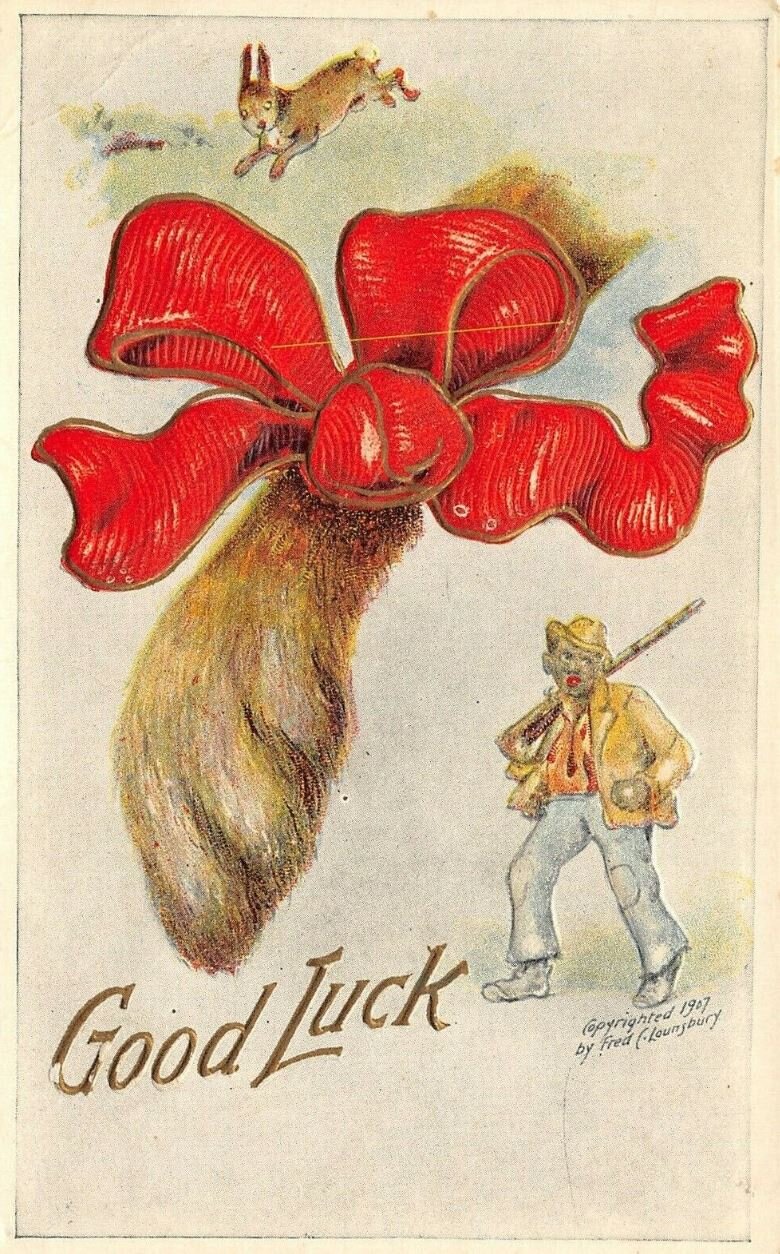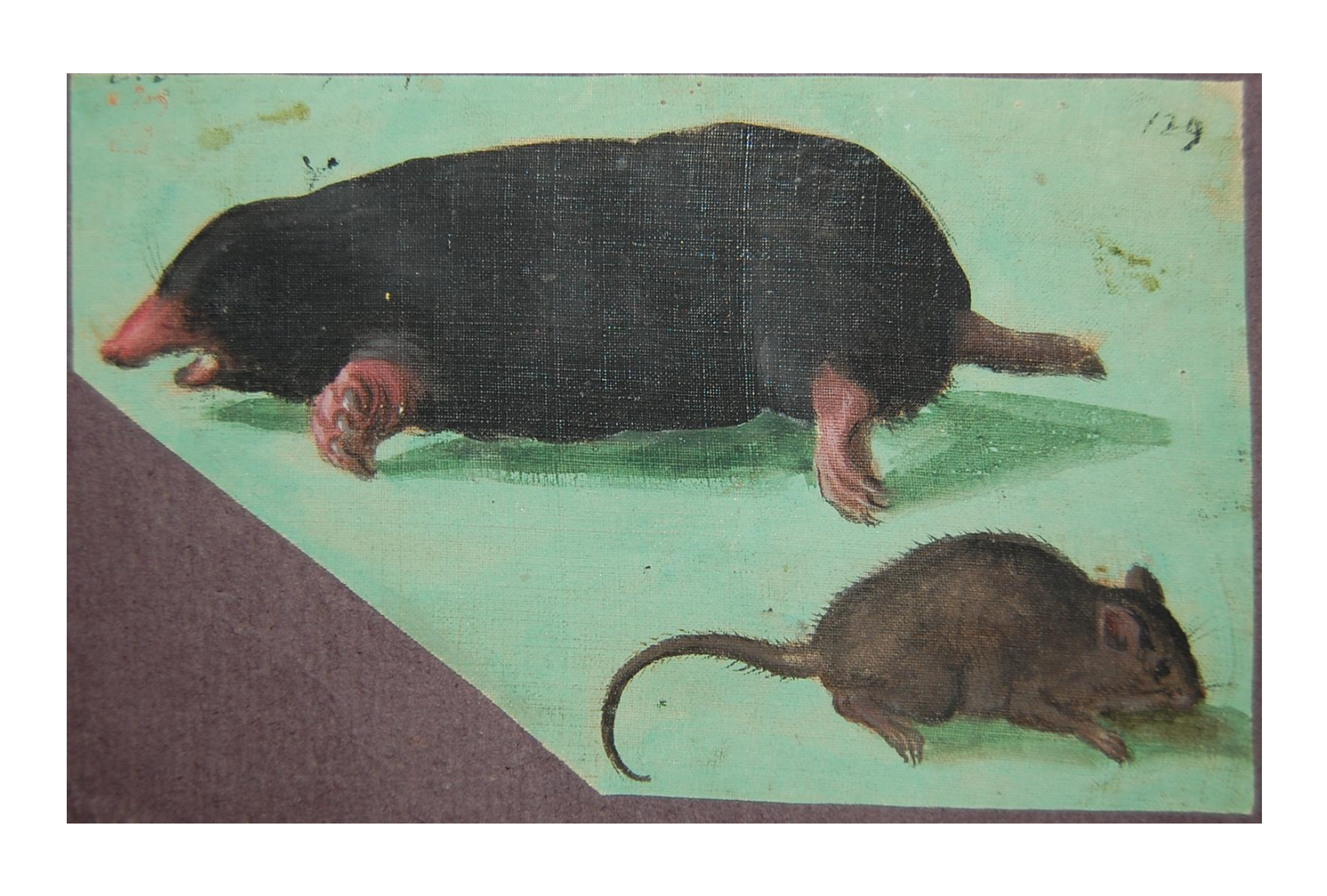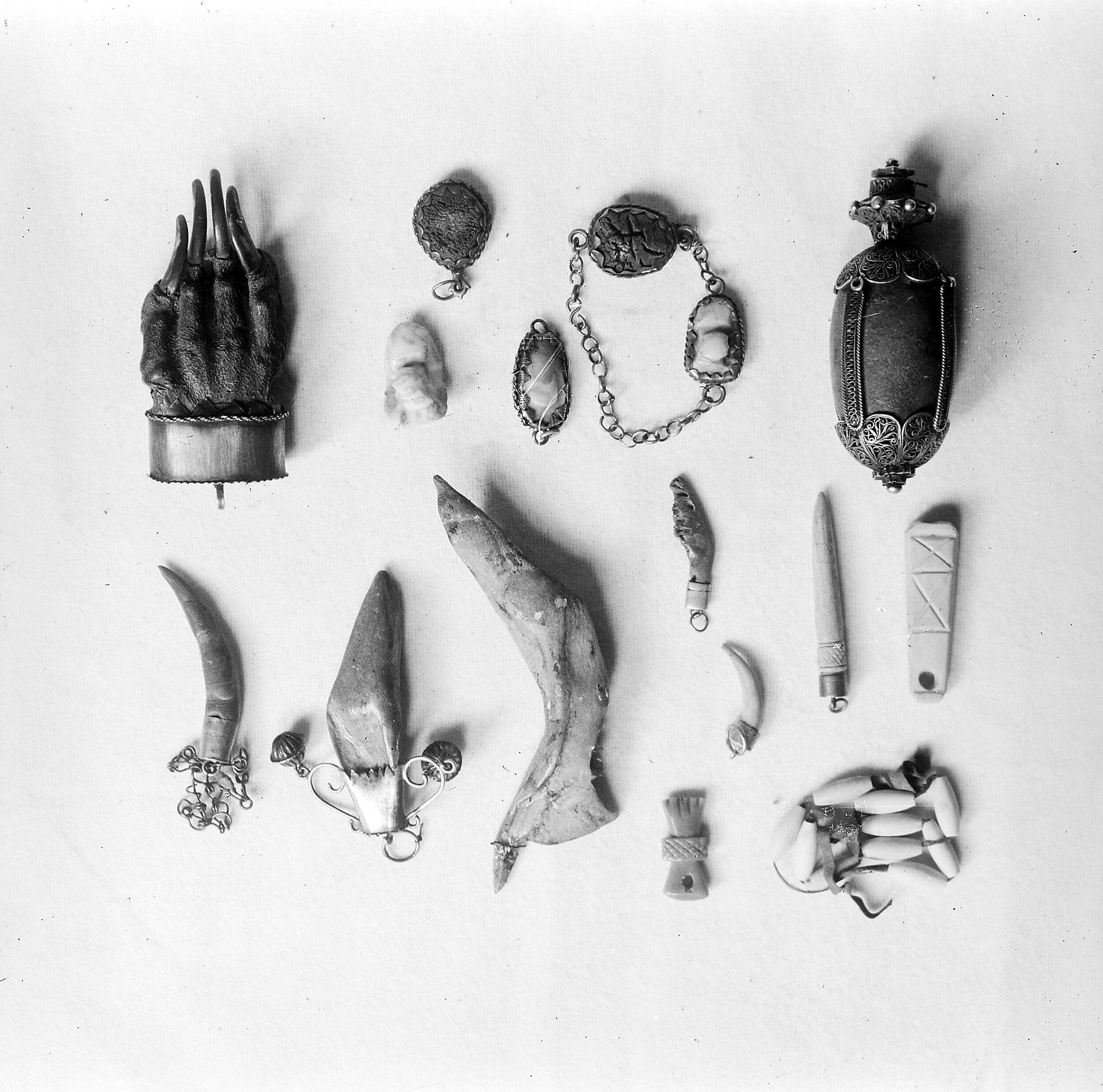The Lucky Rabbit’s Foot Charm…and other animal paw amulets
In many cultures, rabbits are symbols of fertility, strongly associated with sexual potency, spring and renewal. But over time, the rabbit’s foot, specifically, became a gambler’s and hunter’s good luck charm. (Not to be confused with the grouse’s foot, a popular Scottish good luck charm often used as a kilt pin.)
The Rabbit’s Foot has a fairly convoluted history as a good luck charm. The appendage derives its lucky properties from a string of “unlucky” circumstances. While this may strike the gentle reader as somewhat counter-intuitive, in order to be truly lucky, the foot had to be collected in a particular way (e.g. in a cemetery, on a Friday, on Friday the 13th, under a full moon, with a silver bullet, by a Black man, by a cross-eyed man, by a man with red hair, etc.). Although the specifics differ, these are all thought to be “unlucky” conditions. Also, the left hind leg of the rabbit was preferred.
The rabbit’s foot as a lucky fetish was tied to the practice of African-American hoodoo in the Southern United States. As such, minstrel show songs would feature the rabbit’s foot as a lucky charm in ways that would offend our modern ears. (See sheet music below for examples.)
In the late 20th century, rabbits’ feet were commonly dyed bright colors and used as novelty keychains, though nowadays they are made from faux fur and latex bones.
Rabbits’ feet were not the only animal paws used as lucky amulets or as folk medicine - moles’ paws, badgers’ paws and bears’ paws were all used for these purposes. (Please indulge The House in somewhat of a digression after viewing the collection of images below. )


Rabbit's Foot Keychain, House of Good Fortune Collection


Music Division, The New York Public Library. "He had his rabbit's foot with him" The New York Public Library Digital Collections. 1898.

The Left Hind Foot of the Rabbit

Rabbit's Foot Beaded Doll

Pueblo Indian Girl Beading Rabbit's Foot Dolls

Talk About Yo' Luck (The Rabbit's Foot)

From the Ramu Occult Catalog (1980)
Good Luck postcard with rabbit's foot c. 1907, House of Good Fortune Collection

Sally wears a rabbit's foot charm on her necklace in Blow Out. Spolier Alert: she runs out of luck.
Moles’ Paws
Many animals — but moles in particular — suffered at the hands of folk medicine practitioners. The House will spare its gentle readers the gruesome details, but suffice it to say that moles were smothered, disemboweled, crushed, impaled, etc. to produce talismans and treatments for a variety of ailments. These practices were prevalent in Europe dating all the way back to Ancient Greece and Rome.
There were, of course, ritualistic aspects to the killing of the mole to ensure its medicinal or talismanic properties — e.g. during certain phases of the moon, on certain church holidays, by tearing off the right front leg, and in Czechoslovakia, by a “posthumous child.” (Does this concept seem familiar?)
Moles were cure-alls, of sorts. They could be used to treat sores, boils, cancer, sore throat, fever, rheumatism, cramps. colic, goiter, skin diseases and the like. In America, the mole’s paw was worn as an amulet to ward off disease and secure health and longevity. In Lithuania, drinking mole’s blood was said to be a cure for epilepsy; and farmers would rub moles on their horses to keep them healthy. The mole’s teeth were said to cure toothaches and aid in dentition.
Badgers’ Paw Amulets
The badger’s paw was another popular amulet, especially among the Spanish. Badgers are squat, burrowing omnivores with a reputation for fierceness. In modern times, they symbolize persistence, independence and individuality.
According to The Victoria & Albert Museum:
“Amulets gain their power to protect from harm, or to attract good fortune, from their colour, pattern or material. Badger’s paws were considered efficacious against the evil eye, and their use as an amulet was widespread in Spain. At least some were imported, as the badger is not common in the region. Although the use of amulets was largely confined to the poorer classes by the end of the 19th century, they had previously been used by all levels of society. The painter Diego Velazquez shows Prince Felipe Prospero, at the age of two, wearing a badger’s paw amulet in his portrait of 1659.”
You can see the amulet on his left shoulder in the photo below, along with examples of similar badger’s paw amulets from Spain.
Spanish lantern; animal products. Bone objects (including necklace for teething); small mammal's jawbone; 2 salt-codfish jawbones, cock's spur, bezoar, fishes earbones, and equine 'chetsnuts', badger’s paw. Credit: Wellcome Collection. Attribution 4.0 International (CC BY 4.0)
Badger's paw, coral & enamelled gold bell, 17th century. De Osma family heirlooms. Credit: Wellcome Collection. Attribution 4.0 International (CC BY 4.0)
Portrait of Prince Felipe Prospero, 1659 portrait by Diego Velázquez










